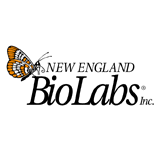|


[http://2008.igem.org/Team:The_University_of_Alberta  ]
[http://2008.igem.org/Team:The_University_of_Alberta/Team ]
[http://2008.igem.org/Team:The_University_of_Alberta/Team  ]
[http://2008.igem.org/Team:The_University_of_Alberta/Project ]
[http://2008.igem.org/Team:The_University_of_Alberta/Project  ]
[http://2008.igem.org/Team:The_University_of_Alberta/Parts ]
[http://2008.igem.org/Team:The_University_of_Alberta/Parts  ]
[http://2008.igem.org/Team:The_University_of_Alberta/Notebook ]
[http://2008.igem.org/Team:The_University_of_Alberta/Notebook  ] ]
|
The aim of our project is to create a biosensor that will detect BPA and other estrogen-like compounds in the environment. BPA is a toxin that has been shown to leech from certain types of plastic that are used in everyday life. Animal studies have shown that BPA is linked to various forms of cancer and other detrimental effects, which are likely to affect humans as well. Having a biosensor that can detect soil and water contaminated with BPA would be a useful tool indeed.
Our project relies on the mechanism by which BPA affects cells. As an estrogen-like compound, BPA has the ability to mimic estrogen. When taken into the cell, it can bind to the cytoplasmic estrogen receptors, and activate genes related to estrogen, tricking cells into thinking they are in an environment containing estrogen when they are not. By introducing the estrogen receptor into "E. coli", we can use it to activate transcription of reporter genes to allow for easy visual identification of environments contaminated with BPA. Furthermore, the system can be used to activate recently characterized genes for BPA metabolism (BisdA, BisdB) in order to help with bioremediation of contaminated areas.
While proving the principle in an "E. coli" system is our main goal for this year’s project, we are thinking ahead to future development of other applications. For example, a BPA detector system put into a plant could serve as convenient 'BPA-sentinel plant' and early warning system if planted in areas at risk for contamination. Project 2 is focused on developing the tools that would allow us to move our project into plants. These will comply with the standard iGEM parts requirements and will allow anyone to use any standard biobricks in plants, opening iGEM up to the plant realm.
Also, we plan on developing a "cell free" version of our system that would allow for cheap and quick detection of BPA "in vitro". This could prove to be of much benefit to poorer or third world nations, which may not be able to afford the resources necessary to maintain the plant system, or where poor regulations regarding BPA have lead to a very high risk of environmental contamination.
| "How do I love thee, plastic? Let me count the ways. I wake up and glance at my plastic digital cable box to check the time. I go to the bathroom to use my plastic toothbrush, shaking a bit of my “nontoxic” tooth powder from a plastic bottle. I fill the plastic container of my Waterpik with mouthwash from another plastic bottle. I step into the shower—my lacy white curtain is protected by a plastic liner, and my chlorine-free shower water comes to me through a plastic-encased filter.Ah, but in the kitchen I am a bit freer of you, plastic. When I learned that my plastic bowls, dishes, and containers could leach harmful chemicals—especially the ones with that sneaky, practically invisible little recycling triangle embossed with the number 7—I bought Pyrex. My soft-boiled eggs are served up in a Pyrex glass dish. A moment of rebellion against thee, plastic! But the microwave in which I heat water for tea is made of plastic as well as metal. And the refrigerator shelf on which I store my eggs is plastic. The coaster on my desk, on which I place my steaming, oh-so-healthy green tea, is plastic. The 22-inch liquid-crystal computer monitor that seems to be the fulcrum of my entire existence is made of plastic. My keyboard, my mouse, my computer speakers, the CD cases for my music collection, my polycarbonate reading glasses, the remote control for my stereo, my telephone—all plastic. The sun shines through my window onto a riot of green plants in … plastic pots. (I could switch to ceramic, but it’s so heavy and hard to heft when I want to water them.) And I’ve been up for only an hour."
--Jill Neimark in Discover Magazine 04.18.2008
|
The genetically engineered machines of past iGEM competitions have, by and large by created using an "E. coli" chassis. Bacteria are powerful tools for this sort of work. They are easy to grow and do so very quickly. They are easily genetically manipulated. They are cheap to maintain. Still we think that we, as scientists and engineers have been limiting ourselves by staying in bacteria. In order to facilitate the transfer of synthetic biology into a new organism, we have designed and manufactured an open source binary vector for transforming our synthesized DNA into plants. While plants take longer to grow, their additional complexity could allow them to perform jobs to which bacteria are not well suited.
An efficient biofuel is one of the Holy Grails of synthetic biology. Progress in this field has the potential to change the world on many levels. We want to part of this effort and so have our picked up where last year’s University of Alberta team left off.
Continued from last year’s team’s efforts, the Butanerd project is focused our continued efforts to create a single butanol producing operon in "E. coli". We are still using genes derived from "C. acetobutylicum"'s butanoate pathway. As the operon is completed and protein expression confirmed we will begin to measure butanol productions and optimize it in relation to butanol tolerance of the bacterial cell.
Contact
You can reach us at igem@ualberta.ca!
Special Thanks
- Dr. Enrico Scarpella
- Dr. Perrin Beatty
- Dr. Robert Campbell
- Dr. Shelagh Campbell (no relation)
- Dr. Jon Dennis
- Mary A De Pauw
Who Visits Our Site





 
|
|
|
|
|
|